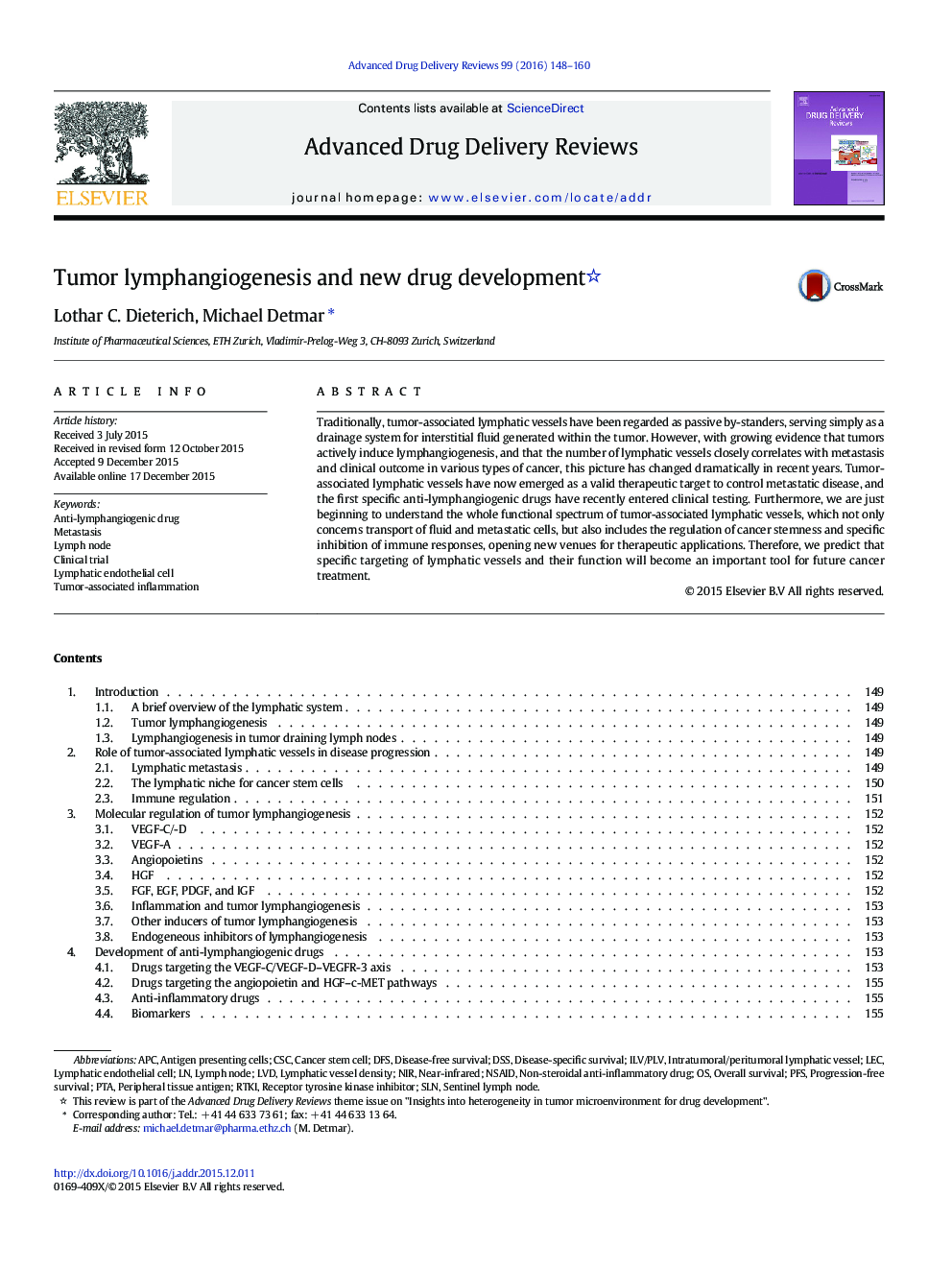| Article ID | Journal | Published Year | Pages | File Type |
|---|---|---|---|---|
| 2070715 | Advanced Drug Delivery Reviews | 2016 | 13 Pages |
Traditionally, tumor-associated lymphatic vessels have been regarded as passive by-standers, serving simply as a drainage system for interstitial fluid generated within the tumor. However, with growing evidence that tumors actively induce lymphangiogenesis, and that the number of lymphatic vessels closely correlates with metastasis and clinical outcome in various types of cancer, this picture has changed dramatically in recent years. Tumor-associated lymphatic vessels have now emerged as a valid therapeutic target to control metastatic disease, and the first specific anti-lymphangiogenic drugs have recently entered clinical testing. Furthermore, we are just beginning to understand the whole functional spectrum of tumor-associated lymphatic vessels, which not only concerns transport of fluid and metastatic cells, but also includes the regulation of cancer stemness and specific inhibition of immune responses, opening new venues for therapeutic applications. Therefore, we predict that specific targeting of lymphatic vessels and their function will become an important tool for future cancer treatment.
Graphical abstractFigure optionsDownload full-size imageDownload high-quality image (101 K)Download as PowerPoint slide
